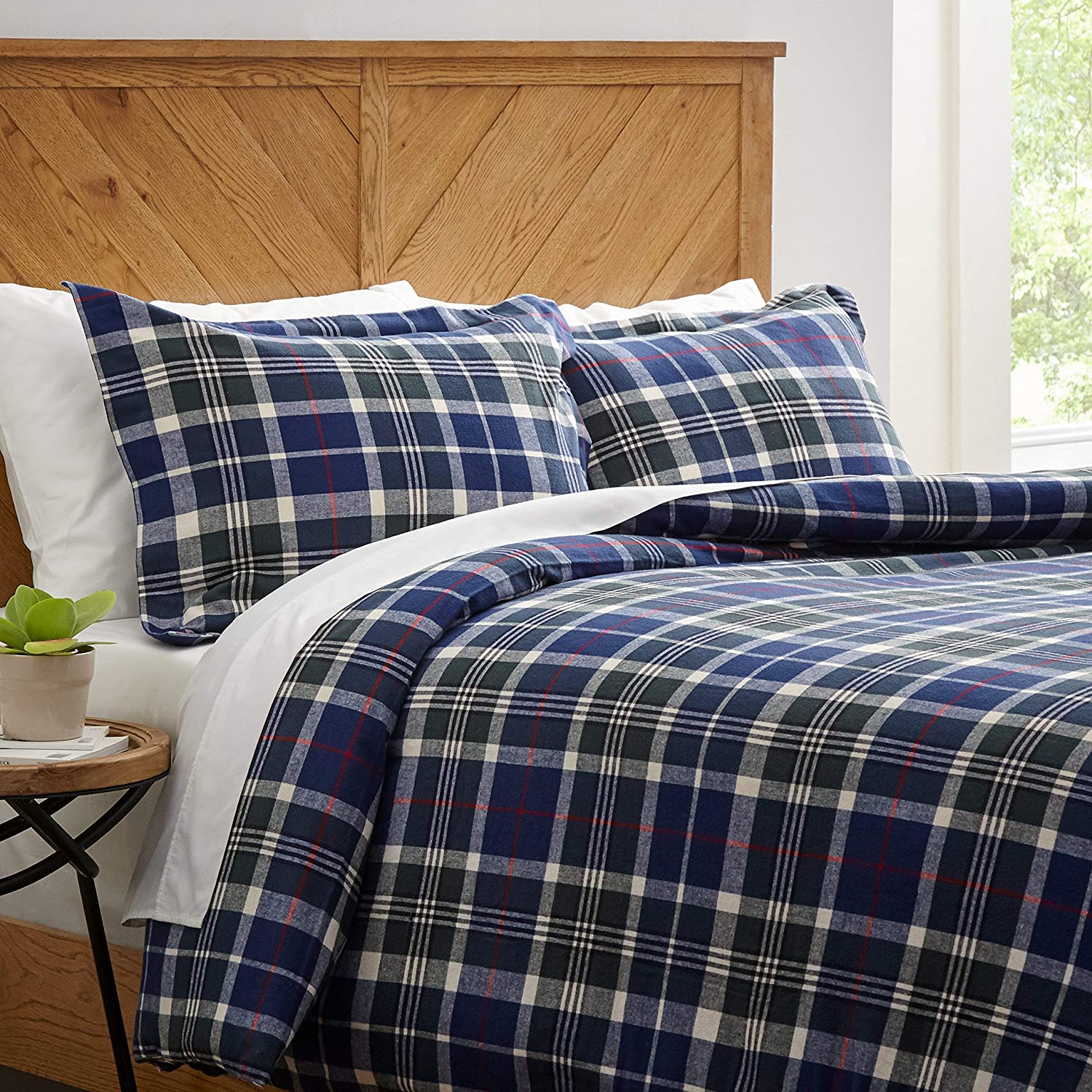
The ‘term’ flannel has been in use since the 17th Century. It refers to a fabric that has been napped to give it a soft and fuzzy texture. Napping is a process that is concerned with gently raising a fabric’s fibers using a metal brush.
Flannel duvet covers are quite unique. When you mention ‘flannel’, people immediately think about warm shirts, skirts, and other clothing articles. They are also immediately reminded of plaid because the two are often confused with one another.
When conversations turn to the subject of bedding, they will also mention flannel bedsheets. For most of them, it comes as quite the surprise to realize that some manufacturers use flannel fabric to make duvet covers.
And once they learn that such products exist, they make it their business to find the best flannel duvet covers on the market.
This is because flannel has a great reputation. It is incredibly soft, boasting the fuzzy texture that was mentioned above. It is also warm. The fibers, which have been raised, can trap pockets of air which they use to create and maintain a cozy sleeping environment.
The best products in this field are also breathable, known for keeping the sleeper warm on a cold night but permitting enough air to circulate through the fabric to prevent overheating.
Along with their durability and easy maintenance, it isn’t that difficult to understand why flannel duvet covers have so many fans. If you want to join this fanbase, take a look at the products we have collected below.
This list has all the best flannel covers you could want. The items are diverse, boasting varying price tags and materials. This gives you plenty of opportunities to find a product that perfectly suits your tastes.
If you don’t want to read every single review, you can use the comparison table to simplify and expedite your decision:
Top 5 Best Flannel Duvet Covers Reviews
1. Pinzon Flannel Duvet Cover
Available in size options like Twin, King, and Full/Queen, this duvet cover comes from Portugal. It consists of 170- gram flannel that gives it a soft, luxurious, and breathable texture.
The shell is 100 perfect cotton. Not only is it smooth to the touch but the double-napped finish augments its softness on both sides. The open-end yarn that was used guarantees optimal strength and pill-resistance. As such, you can wash and dry the cover in a machine without ruining it. Though, some pilling has been known to occur. But that is why the manufacturer calls the cover pill-resistant rather than pill-proof
With open-end yarns, surface fibers are removed to produce a velvety soft product that will stand the test of time.
The cover includes a hidden-button closure that will secure the comforter without ruining the product’s appearance.
The OEKO-TEX standard certificate the manufacturer has chosen to display proves that the cover’s production process meets the highest safety and environmental standards.
In other words, the product is perfectly safe for human use. You can also use it knowing full well that it won’t harm the environment.
Some customers have raised complaints about the size. Apparently, some covers are too large.
Pros
- Machine washable
- 100 percent cotton
- Double-napped finish
- OEKO-TEX Standard 100 Certification
Cons
- Larger than expected
- Pilling occurs from time to time
2. Pinzon Plaid Flannel Duvet Cover
If you like plaid, you are unlikely to find a better flannel duvet cover than this one. This is because it is only available in duvet prints and designs. This makes the product unappealing to people who want more variety.
Made in Portugal, the shell is 100 percent cotton. You only get the cover. There is no duvet or shams. The manufacturer used 160-gram flannel which promises durability and supple softness.
The surface, which was already soft because it is cotton, is made even softer and more attractive by the double-napped finish which produces an ultra-velvety feel.
There are button closures that will secure the duvet to the cover. The OEKO-TEX Standard Certificate tells you that the product was made without the use of dangerous chemicals. Therefore, it is suitable for human use and the environment.
The cover, which can be washed and dried with a machine, has been known to pill. Additionally, some of the sizes are larger than their labels suggest. It will shed at the start, though this problem dissipates once you wash the cover a few times.
Pros
- Double-napped finish on both sides
- 100 percent cotton and 160-gram flannel
- Machine washable
- Ultra-velvety feel
Cons
- Too large
- Sheds at the start
3. AmazonBasics Everyday Flannel Duvet Cover
With this cover, you get a few more color options. The shell is still 100 percent cotton. This speaks to the softness and the durability of the product. Shipped with 2 equally attractive pillow shams, the cover features 155-gram flannel.
This is responsible for the luxurious softness and the breathable weave of the product. The triple-napped finish on the outside and the double-napped finish on the inside only succeed in strengthening the softness.
The button closures are hidden. They will keep the duvet insert secured in place without ruining the cover’s appearance. Some people have complained that the buttons are too small for their holes. As such, they do not always stay closed.
Machine washable and dryable, the cover is not only easy to clean but it has an OEKO-TEX Standard 100 certificate which proves that it does not pose a danger to human beings or the environment.
Pros
- 100 percent cotton and 155-gram flannel
- Hidden button closures
- Supreme softness
- Easy to wash
Cons
- Buttons don’t stay closed.
4. Stone and Beam Rustic Plaid Flannel Duvet Cover
This is another duvet cover that primarily comes in plaid designs and colors. Keep that in mind before you buy it. They don’t have any covers that are not plaid. Regardless of the print you choose, the covers feature soft and breathable flannel with a double-napped finish that will keep you warm on cold nights.
At 4.7 pounds, the cover isn’t necessarily the heaviest. But some people thought that it was too hot to use with a comforter in the summer.
The shell is 100 percent cotton. This contributes to the product’s soft texture. Because cotton is known for its strength, it shouldn’t come as a surprise to learn that the product is easy to maintain. You can wash and dry it in a machine. The OEKO-TEX certificate tells you that the cover was made using environmentally friendly methods that did not involve the use of harsh toxins and chemicals.
The product comes with a cloth drawstring bag that you can reuse. If you have a pet, removing hair from the cover is difficult.
Pros
- Machine washable
- OEKO-TEX certification
- Reusable drawstring bag
- Breathable
Cons
- Too warm to use with a duvet in the summer
- Pet hair is not easy to remove
5. Ceruleanhome Velvet Flannel Duvet Cover
This duvet cover is 100 percent velvet flannel. This is why it is so soft and durable. You can wash it in a machine with a washing bag, cold water, and a gentle cycle. The cover will survive the process.
You cannot return it once it has been used or washed. But it is so plush and pretty that you are unlikely to want to return it. The backside is surprisingly silky, a stark contrast to the front side which is quite shaggy.
Some customers found that their covers were larger than the size advertised. Keep that in mind if you don’t like covers that haven’t been completely filled by their duvet.
It comes with ties but they are not that strong. Depending on the weight of the insert, they might break. The cover uses a zipper closure to keep the insert on the inside.
Pros
- 100 percent velvet flannel
- Machine washable
- Zipper closure
- Plush and pretty
Cons
- Larger than expected
- The ties are not strong enough
6. NTBAY Velvet Duvet Cover
At 3.8 pounds, this is one of the lighter covers on this list. Available in several rich and beautiful colors, the microfiber cover features soft and smooth fabric that is resistant to shrinking and fading.
It doesn’t pill as easily as some of its competitors no matter how frequently it is washed. It includes a hidden zipper closure that simplifies the process of inserting and keeping the duvet in place.
You get four corner ties that will secure the insert, preventing it from slipping and shifting unnecessarily. The simple but solid hues the product features are designed to inject an element of luxury into your bedroom. Though, some customers will tell you that some of the colors are not as amazing as the pictures suggest.
Maintenance is easy. The product can be washed and dried in a machine. Use cold water, a gentle cycle, mild detergent, and a low heat setting. Some shedding might occur but it will dissipate after the first wash.
The manufacturer offers a 100 percent satisfaction guarantee. You can return the cover in 90 days if it fails to meet your expectations.
Pros
- 100 percent satisfaction guarantee
- Easy to clean
- Soft and smooth
- Hidden zipper closure and corner ties
Cons
- The colors in the pictures are not completely accurate
- Sheds at the start
What is Flannel Fabric?
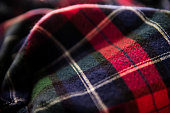
Flannel Fabric
Flannel is a fabric can be made from a variety of materials. For a fabric to be called flannel, it must be napped on one or both sides. This is the result of brushing. It produces an incredibly soft and cozy texture.
People keep confusing flannel with plaid. That is to say, they use the two terms interchangeably. However, plaid is not a fabric. It is a type of pattern that is created on the surface of a fabric. Flannel is a very soft and smooth fabric that is used for making different types of bedding items. For instance, ugg sheets are made from cotton flannel fabric.
How Duvet Covers are made from Flannel?
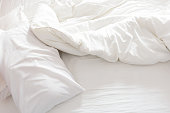
Duvet cover making
Flannel duvet covers are sewn just like any other duvet cover.
The specific weaves and sewing techniques will vary depending on the manufacturer.
But the general approach is the same. So is the manner in which the flannel fabric is made:
- Manufacturers start by acquiring the material from which the flannel will be made. That could be organic materials like wool or synthetic materials like microfiber. Silk is not suitable for making flannel because its fibers are too fine.
- Once the material is chosen and acquired, it is spun into a yarn. Manufacturers could use any one of dozens of techniques and tools to produce the yarn. The approach will vary depending on the material.
- To make flannel, manufacturers typically use twill or plain weave. Though, the fabric doesn’t qualify as flannel until it is brushed on one or both sides to produce a soft texture.
- If the material used was synthetic, the final product will receive a flame-retardant coating. This doesn’t happen with organic materials like wool that have natural flame-resistant capabilities. Once you have treated flannel fabric, it can be sewn into a duvet cover.
Types of Flannel Duvet Cover
Flannel duvet covers are categorized according to the material that was used to make the flannel. That includes:
Wool

Organic Wool
Many people associate wool with flannel, especially in European regions. Wool is not only warm and soft but naturally flame-resistant. This makes the material quite attractive to some manufacturers. Though, some people dislike it because it traps too much heat.
Cotton
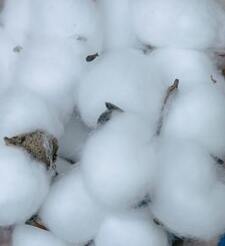
cotton fiber
Cotton is the most popular material from which flannel is made. It produces soft and durable duvet covers that have been napped on both sides. Cotton duvet covers are more breathable than their woolen counterparts.
Synthetic
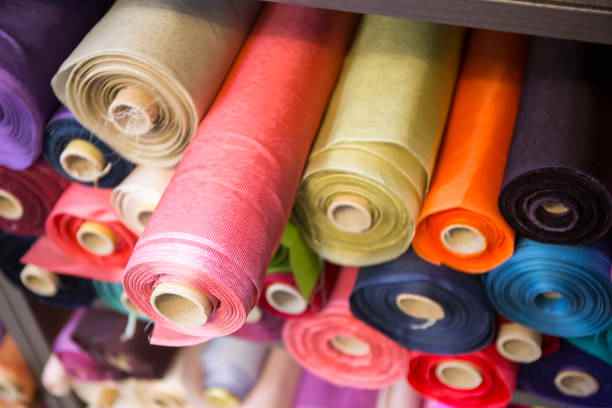
Synthetic Texture
Some flannel fabrics are made from synthetic materials like polyester and nylon. They are warm and soft but they lack the temperature regulating capabilities of their organic counterparts. They are also made with toxic substances.
There are other types of flannel but you rarely see them in duvet covers. They include:
- Flannelette – This type stands out because of how it is woven. While it can be made from any of the materials above, it has a coarse texture.
- Vegetable – This type fell out of favor in the 20th Century. It is made from a type of cellulose.
- Ceylon – Ceylon isn’t as uncommon in bedding items as the types above. It is a blend of cotton and wool and it comes from Sri Lanka.
Why Choose Flannel Duvet Cover?
Flannel is relatively commonplace in duvet covers because it has several benefits to offer, including:
- Soft
The napping process used in the production of flannel creates a fuzzy texture that is incredibly soft and soothing against the skin.
- Warm
Not only are flannel duvet covers soft but they are quite warm, especially if they are made from materials like cotton, wool, and microfiber that can insulate the body from the cold, trapping the heat it generates.
- Maintenance
Flannel covers are strong, durable, and easy to care for. You can wash and dry most of them in a machine.
- Breathability
The best flannel duvet covers can regulate your temperature. Depending on the materials that were used to produce their fabric, you can trust them to wick moisture away and to permit air to circulate through them, preventing the heat generated by the body from overwhelming the sleeper.
Things to Consider When Purchasing Flannel Duvet Cover
You cannot rely on the descriptions that manufacturers provide to identify the best flannel duvet covers. Manufacturers want you to buy their products, so they are more than happy to lie. To identify the best covers, you must take factors such as the following into account:
Material
Flannel isn’t all the same. Some flannel fabrics are better than others. It is a question of the material that was used to make them. Your options include:
- Wool – Wool sounds like a sensible choice for duvet covers because it is soft and it does a better job of storing heat than any other flannel fabric. But it is expensive and it doesn’t regulate your temperature as effectively. It is most compatible with people that live in cold regions.
- Cotton – This is the most popular of the bunch. It is not only soft and soothing but warm and breathable, not to mention moisture wicking.
- Synthetic – Some flannel duvet covers are made from synthetic fibers like polyester. Synthetic fabrics are warm and easy to care for. But they tend to feature toxic elements. They are also not as breathable.
If you don’t like any of those options, you can make do with a blend that combines organic and synthetic materials to produce a cover that is warmer and more durable.
Weight
The quality of flannel is not determined by its thread count. The material is judged using the weight, specifically the grams per square meter. The greater the weight, the stronger, more durable, and warmer the fabric.
The weight you choose should depend on the warmth you want. For instance, flannel with a 170 GSM rating tends to produce warm and heavy fabrics. Flannel with a 135 GSM rating or less is lightweight.
Napping
The term refers to the process of raising a fabric’s fibers using a fine metal brush. Napping or brushing gives flannel its distinct texture. It also allows the material to trap heat. Some flannel covers are napped on one side. Others are napped on both sides.
You should know that synthetic fabrics like polyester cannot be double-napped; therefore, if you choose a synthetic flannel cover, you should know that double napping isn’t an option. Cotton, on the other hand, is double-napped quite frequently.
Fine VS Bulky
Flannel fabric can be fine or bulky. Bulky flannel sounds attractive but it is actually disadvantageous because it produces covers that shed and pile. You should get fine flannel because it is longer lasting and more durable, less likely to pill or shed.
Origins
Flannel is normally associated with three countries:
- Australia – This is the world’s largest wool producer.
- India – This is the world’s largest cotton producer
- China – This is the world’s largest manufacturer of synthetic fabrics
Some people argue that these three countries are the biggest producers of either wool, cotton, or synthetic flannel. But that does not make them the best. You should instead keep your eye on:
- Portugal – The country has been making flannel for generations. They are known for their high-quality long-staple cotton. Their napping techniques produce exceptional flannel
- Germany – Germany has also spent many years producing flannel. Their products are dense and sturdy.
- England – Though not a popular, English flannel is durable. It has a very slight nap.
You can trust flannel duvet covers from any of these three countries.
Maintenance
Flannel duvet covers have different washing and maintenance requirements. Some covers can be machine washed. Others must be laundered professionally. It all depends on the material that was used to make the flannel.
Each manufacturer will instruct you on the best way to wash their flannel. But you should endeavor to identify covers that are easy to wash because that will make them less of a hassle to maintain.
Synthetic flannel is typically the easiest to wash, followed by cotton.
Guarantee
The best products have attractive warranty and guarantee policies. You need to know that you can return your flannel duvet cover if it has defects or if it fails to meet your expectations.
Colors
With flannel duvet covers, the design is directly tied to the quality of the cover. Products with tighter weaves are superior because they have richer colors that are less likely to fade.
Low-quality flannel with a poor weight might come in amazing patterns but they will fade over time as you wash the cover. As such, it isn’t enough to find flannel duvet covers in great colors. You must find great colors that are paired with high-quality flannel. Otherwise, those colors will fade in a few weeks.
Weave
When it comes to buying flannel, you can expect to encounter the following weaves:
- Jersey – This so-called plain knit has flat vertical lines. It produces warm covers with a stretchy construction
- Percale – Typically found in cotton, this weave features a double crisscross pattern that produces tightly woven, tear-resistant products.
- Twill – This weave produces a diagonal pattern. Bedding items with a twill weave are bulkier and more durable. They are also more capable of resisting water and air.
- Sateen – This is a looser weave that produces smoother, wrinkle-resistant covers.
Flannel Duvet Covers-Frequently Asked Questions
Are Flannel and Plaid the Same?
Plaid is a pattern. Flannel is a fabric. They are not the same.
Is Flannel too Hot for Summer?
It depends on the material. Synthetic and wool flannel might be too warm but cotton has a reputation for being breathable.
Do Flannel Covers have a Thread Count?
Flannel has a thread count but it doesn’t indicate quality. With flannel, quality is determined by the weight.
Do Flannel Duvet Covers Shrink?
Flannel duvet covers made from cotton and wool can shrink.
Why Do Flannel Duvet Covers Pill?
There are three factors that cause pilling in flannel:
- Friction – when flannel rubs against other fabrics, pilling occurs
- Washing – flannel should be washed in warm or cold water. If you wash it in hot water, pilling will occur.
- Quality – Low-quality duvet covers tend to pill more than their high-quality counterparts. If you can get a flannel duvet cover made from long-staple cotton, for instance, you are less likely to see piling.
Conclusion
Flannel duvet covers stand out because of their fuzzy texture. But they are also quite soft. If you want to change your duvet cover but you have no interest in using conventional materials like cotton and wool, you might as well try the products above.
Because this is flannel, you are still using conventional materials but they have been napped and paired with interesting weaves to produce unique bedding items that will keep you warm and toasty on a cold day.






